Artist Thomas Cole took up a grand theme in 1833 — The Course of Empire, a series of five paintings that depict the rise and fall of a civilization. The Savage State shows a prehistoric wilderness in which the only artificial note is a circle of teepees:
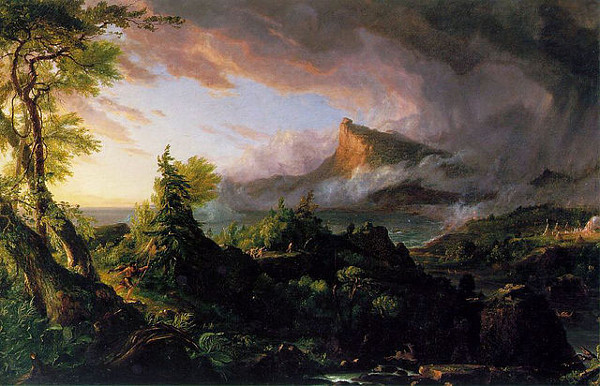
The Arcadian or Pastoral State shows the beginning of agriculture, with a primitive temple, farmers, and shepherds:
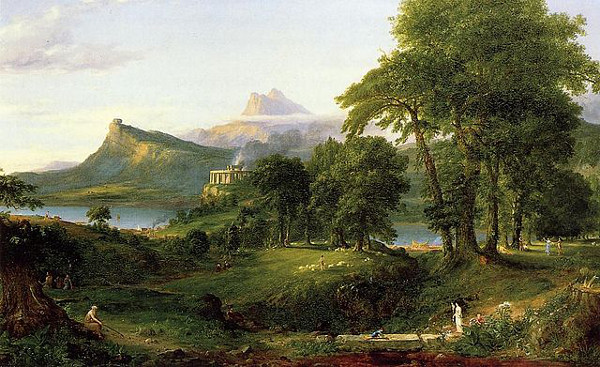
The Consummation of Empire shows a thriving city, with an imperial procession crossing a triumphal bridge:
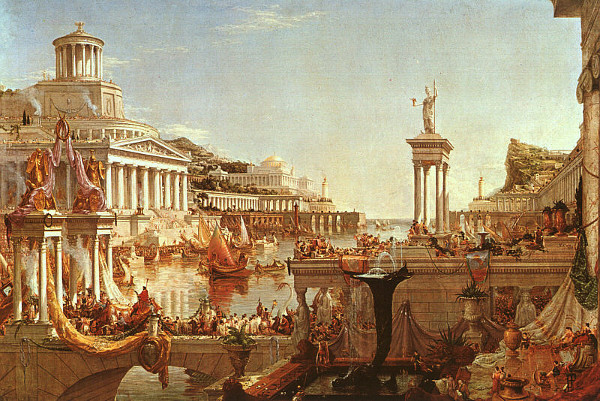
Destruction shows barbarians sacking the city and nature herself punishing human presumption:
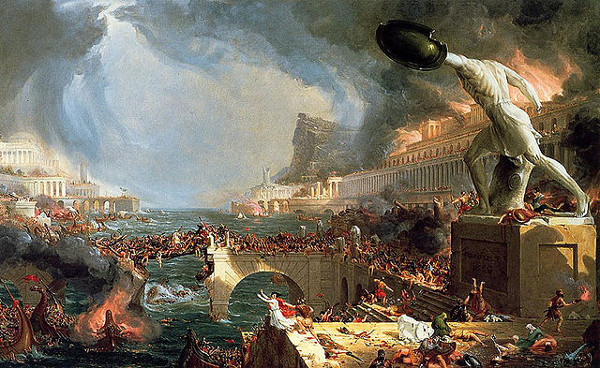
And Desolation shows the return of nature, with trees growing up through the ruins of the city:
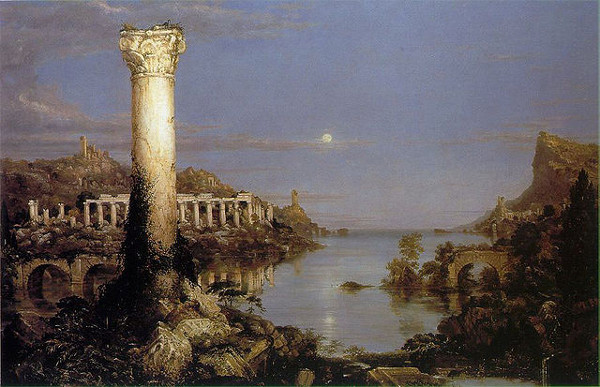
Interestingly, all five paintings depict the same scene: In the foreground is a natural port, and in the background is a distinctive mountain precipice. The time of day passes from dawn to dusk.
In 1836 more than 2,000 people attended the paintings’ exhibition at the National Academy of Design, an audience unprecedented in the United States. “The philosophy of my subject is drawn from the history of the past, wherein we see how nations have risen from the savage state to that of power and glory, and then fallen, and become extinct,” Cole had written to his patron Luman Reed. “You will perceive what an arduous task I have set myself; but your approbation will stimulate me to conquer difficulties.”
(Thanks, Cody.)
